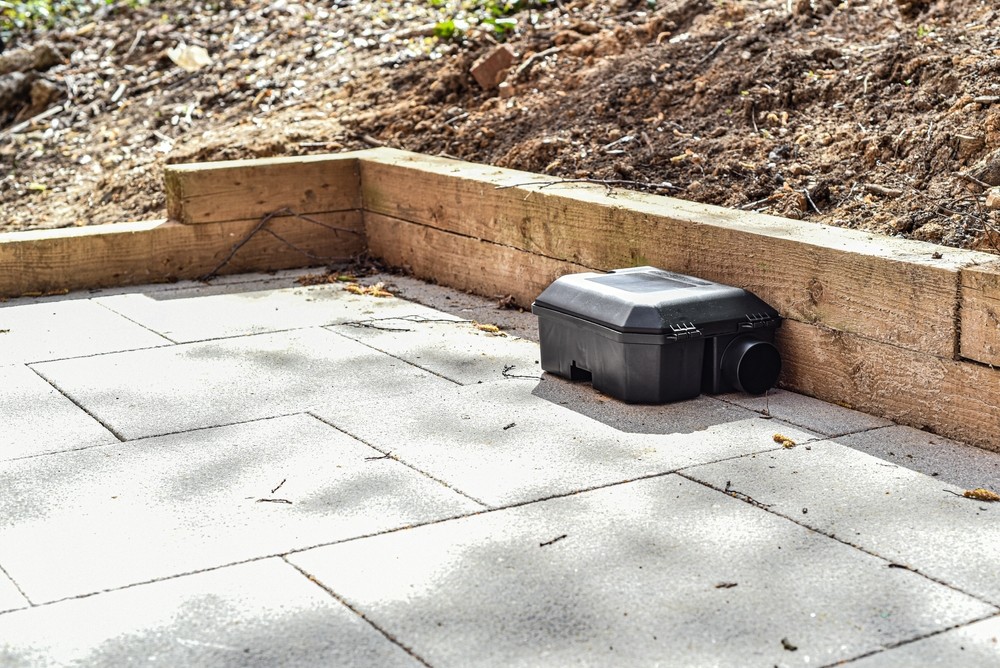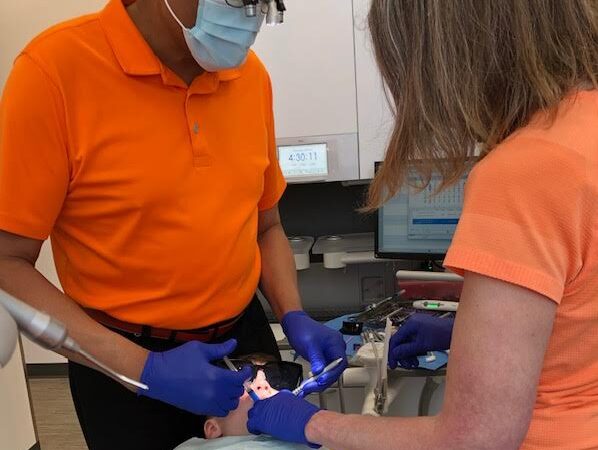From Mice to Monsters: A Complete Home Guide to Rodent Pest Control

Are rodents taking over your home and causing havoc? Rodent infestations are not only a nuisance but can also be dangerous for your health. From mice to monsters, we’ve got you covered with our complete home guide to rodent pest control. In this blog, we’ll cover all the information you need on identifying different types of rodents, signs of infestations, diseases caused by rodents, prevention techniques, bait options, sanitation methods after an infestation, exclusion methods, and even how to safely and humanely deal with a groundhog infestation. Keep your family safe and your home rodent-free with our expert tips and advice.
Understanding Rodent Pest Control
Effective management of rodent pests requires a deep understanding of their behavior and habits. First, identify the specific rodent type and its habits. Control measures like sealing entry points and eliminating food sources can work wonders in controlling an infestation. Additionally, trapping or baiting is effective, but it’s best to call professional exterminators for severe or persistent infestations. Achieving peace of mind is possible with integrated pest management techniques that also exclude rodents from crawl spaces and attics while ensuring proper sanitation.
Identifying the Different Types of Rodents
Rodents are a common problem that can lead to property damage and spread diseases via their feces, urine, and bites. Signs of an infestation include droppings, gnaw marks, and nests. To control the infestation effectively, it is crucial to identify the type of rodent since each requires a unique approach. Prevention techniques such as sealing crevices and eliminating potential food sources like pet food or firewood help manage the rodent population. Consider using live traps or baits like peanut butter to prevent roof rats or house mice from causing structural damage. Overall, it’s essential to prioritize sanitation and exclusion techniques as part of integrated pest management (IPM) to reduce the risk of disease transmission via germs, allergens, ticks, fleas, mites, or hantavirus.
Signs of a Rodent Infestation
Protect your home and health from rodent infestations with these pest control tips. Keep an eye out for signs like gnaw marks on insulation and wiring, visible droppings, or unpleasant odors. Seal entry points with mesh or hardware cloth, remove potential food sources like pet food or firewood piles, and place traps or bait stations to control the population. Professional exterminators can assist with more severe infestations. Don’t let rodents take over your space – stay safe and healthy with integrated pest management.
What Diseases Do Mice and Rats Carry?
Mice and rats can spread diseases like hantavirus, salmonella, and leptospirosis to humans through contact with their droppings, urine, or saliva. Symptoms vary and can range from mild to severe. Prevent rodent infestations by sealing entry points, storing food properly, and maintaining cleanliness.
What Are the Allergens Caused by Rodents?
Rodents can produce allergens from their urine, feces, and saliva, leading to respiratory issues. Symptoms include sneezing, coughing, and difficulty breathing. Cleanliness is key in preventing exposure to rodent allergens. Seek help from a pest control professional to identify and eliminate potential rodent problems.
Prevention Techniques for Rodent Infestations
Protect your home from the risk of disease and damage caused by rodents with effective rodent control techniques. Seal crevices and potential entry points with hardware cloth to keep out roof rats, house mice and other small rodents. Keep your living spaces clean and remove pet food or other potential food sources. Use bait stations or live traps to manage the rodent population year-round, avoiding the need for harmful pesticides. Regular inspections of attics and crawl spaces can detect burrows or gnaw marks that indicate a rodent infestation.
How to Seal Your Home Against Rodents
You can safeguard your home against rodent infestations by following some simple steps. Seal up any potential entry points into your home such as gaps in walls or floors using steel wool or caulk. The installation of weather stripping and door sweeps on all the exterior doors can be useful in preventing the entry of rodents through the gaps under doors. To keep rodents away from entering through crawl spaces or attics use mesh to cover vents and other openings. Trimming trees and bushes around the house prevents rodents from using them as bridges to enter the house. Also employing hardware cloth on openings leading into crawl spaces can help prevent rodent infestation.
How to Eliminate Potential Rodent Food Sources
A clean environment is an essential part of integrated pest management for rodent control. To eliminate potential rodent food sources year-round, it’s important to make sure your home is free of clutter and trash. Store all food in airtight containers and keep pet food dishes clean and empty at night to avoid attracting rodents searching for a food source. Regularly cleaning floors and surfaces will help remove crumbs and spilled food that may attract pests like roof rats or house mice. Additionally, you should eliminate any standing water sources such as leaky pipes or open drains. Remember to keep garbage cans tightly closed both indoors and outdoors to prevent small rodents from finding their way inside your home.
How to Use Mesh to Keep Rodents Out of Your Yard
To keep your yard free of rodents and avoid potential rodent infestations, consider using mesh wire to block their entry. Choosing a small enough mesh wire will make it difficult for rodents like roof rats and house mice to squeeze through and enter your yard. Secure the mesh tightly around any potential entry points like gaps in fences or holes in walls to prevent them from finding a way inside. Regularly check for damage and repair any holes or tears promptly, as rodents can easily find their way through even small openings. Adding a layer of gravel or rocks along the perimeter of the mesh can also help discourage not only rodents but also other pests like termites and ticks who may be attracted by debris buildup near your home. This will give you peace of mind while ensuring that your yard remains pest-free year-round.
Different Types of Rodent Bait
Rodent infestations can be controlled by using different types of bait such as non-toxic, poison, humane traps, glue traps, and electronic traps. Non-toxic bait is safe for pets and children but somewhat less effective than other types. Poison bait contains lethal chemicals that could potentially harm pets or children. Humane traps capture rodents alive without causing any harm, whereas glue traps may cause slow and painful death. Electronic traps are quite efficient in killing rodents instantly with an electric shock. It is best to choose the type of bait based on your specific rodent problem.
Using Single Feed Bait for Rat Control
Proper usage of single feed bait can help you get rid of rodents. This kind of bait is lethal and requires cautious handling as it may harm non-target creatures or even humans. For best results use tamper-resistant bait stations and follow all instructions on the label. Dispose of any excess bait safely. Manage your rodent infestation today with peace of mind.
How to Properly Use Rodenticides and Bait Stations
When dealing with rodent infestations, proper use of rodenticides and bait stations is crucial to effective pest management. To start with, rephrase the writing points in order to avoid duplication of content. It helps to break up the instructions into two or three easy-to-read paragraphs that ensure a smooth flow from previous topics discussed under rodent pest control. In doing so, you can incorporate as many secondary key terms as possible such as roof rats, house mice, pet food sources and even integrated pest management (IPM) techniques. Remember not to start with ‘rodent pest control’ and maintain a friendly tone throughout this informative guide.
Why Choose Our Rat and Mice Bait Stations?
Our rat and mice bait stations offer a secure and efficient solution for managing rodent populations at home. The stations are designed to prevent pets or children from accidentally ingesting the bait, which is formulated to attract rodents. They can be used outdoors and indoors thanks to their weather-resistant design. Using bait stations as part of a comprehensive pest management strategy can help avoid future infestations.
Sanitation Techniques After a Rodent Infestation
After a rodent infestation in your home or business, proper sanitation techniques are crucial to preventing further issues. Thoroughly clean all areas affected by the infestation using disinfectants to eliminate harmful bacteria and viruses. Be sure to dispose of all contaminated food sources properly. Seal up any holes or gaps in your walls, floors, and ceilings that could allow rodents to enter and cause re-infestation. Utilizing traps and baits is also important for capturing any remaining rodents. Consider hiring professional pest control services for a thorough inspection and treatment plan for the best results.
How to Properly Clean After a Mice Infestation
Cleaning after a mice infestation is crucial for preventing the spread of diseases and eliminating all traces of rodents. Remember to always wear protective gear before starting the cleaning process. Use a vacuum cleaner with a HEPA filter to clean all surfaces. After vacuuming, disinfect surfaces with a bleach solution containing peanut butter or other rodent attractants and seal all entry points to keep rodents out. Dispose of contaminated food and sanitize food preparation areas regularly to maintain peace of mind year-round.
Exclusion Methods for Rodent Control
The best way to handle a rodent infestation is by practicing exclusion techniques such as identifying and sealing off entry points, removing potential nesting sites like firewood piles or shrubs, and keeping your home clean year-round. To seal entry points, use hardware cloth or caulk. Installing door sweeps or screens helps prevent rodents from entering your home. Traps or rodenticides can capture live rodents while regular sanitation prevents infestations by eliminating odors that attract them.
How to Remove Shrubs and Other Rodent Hideaways
To control rodent populations, it’s crucial to eliminate their hiding spots such as shrubs and plants around the house. Trim them regularly and dispose of the waste properly to prevent infestation. Use alternative landscaping options like gravel instead of mulch, as they are not attractive to rodents. Check frequently for potential entry points and use caulking or steel wool to seal them off. Keep your surroundings free from food sources that may attract pests; this way you can enjoy peace of mind knowing you’re not at risk of disease.
How to Identify and Repair Potential Rodent Entry Points
Preventing a rodent infestation requires identifying and repairing potential entry points such as vents or crevices that are larger than a dime. Regularly inspect your home for new potential entry points and use durable materials like steel wool or caulking to seal them off. Such exclusion methods are essential components of an integrated pest management plan to help you avoid the risk of disease from allergens found in rodent droppings and urine.
How to Safely and Humanely Deal with a Groundhog Infestation
Groundhog infestations can be tricky, but dealing with them safely and humanely is crucial for public health. To start, identify the type of rodent and follow local regulations. Use a combination of methods like live traps, repellents, mesh, and exclusion techniques to eliminate the infestation. Don’t forget to seal all entry points and remove any potential food sources. For best results, consider hiring professional exterminators or adopting integrated pest management (IPM) practices year-round.
![]()








